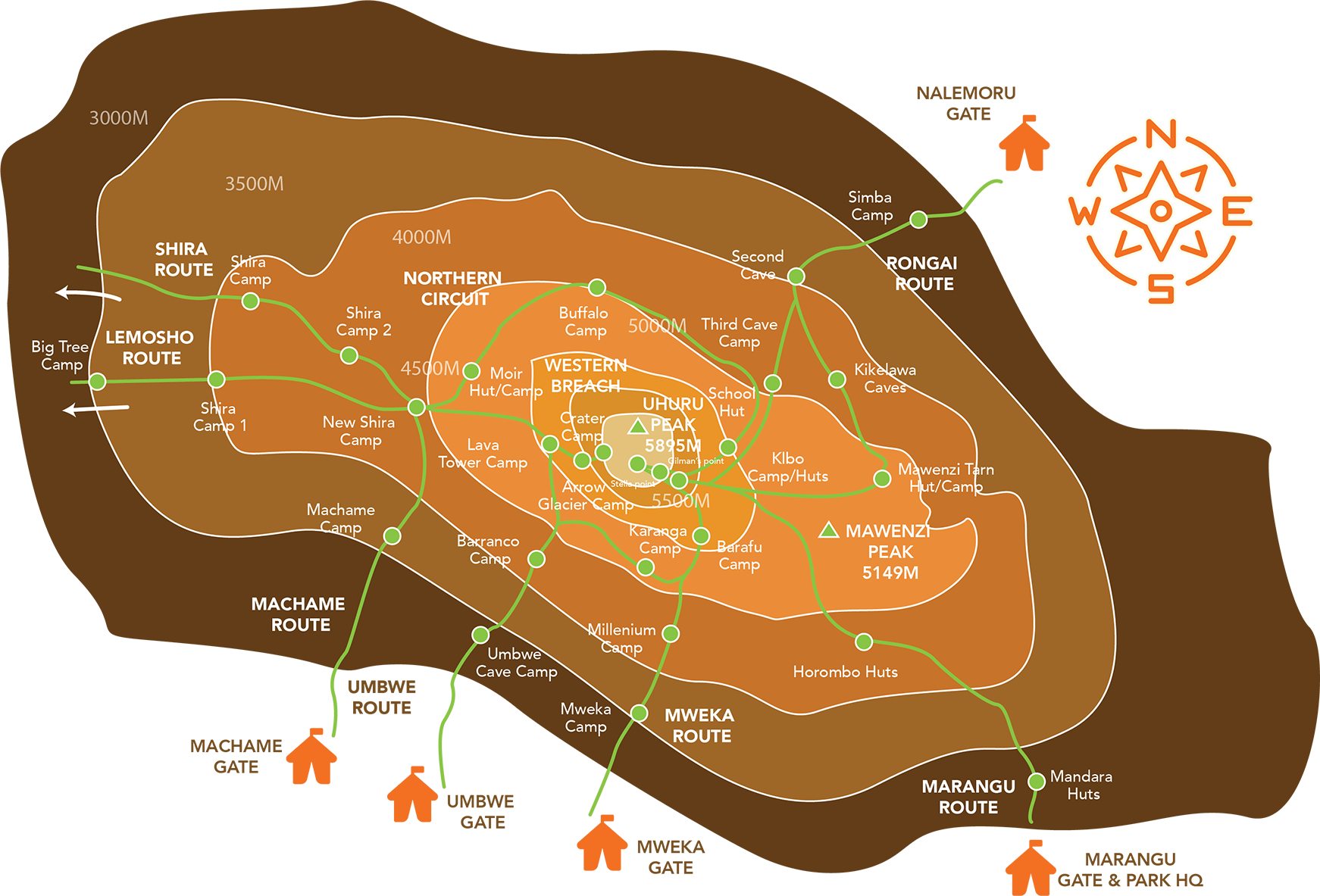
Kilimanjaro Route
Mount Kilimanjaro, the “Roof of Africa”, is Africa’s highest peak and the world’s tallest free-standing mountain. To be able to successfully reach its peak or even just trek its diverse terrains is a dream-come-true and an absolute highlight to your trip to Africa. The best thing is, it offers various routes for different kinds of climbers!
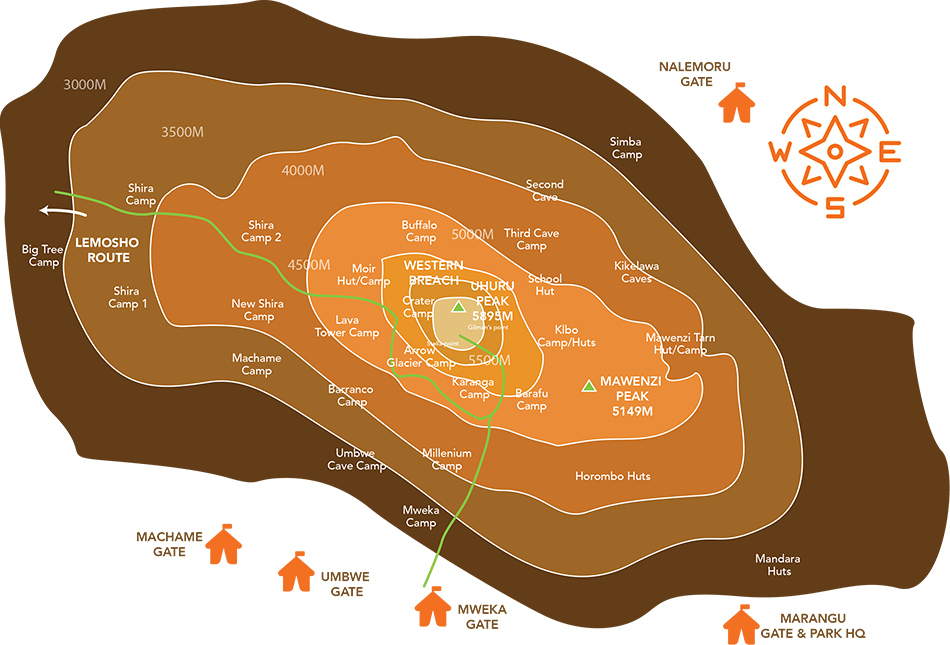
Lemosho Route
Distance: 67 km Days: 6-8 Difficulty Level: High
Considered the most scenic trail, the Lemosho route offers a chance to hike through one of the world’s largest high-altitude plateus, the Shira Plateau. It also offers plenty of opportunities for acclimatization and it starts from the western part of the mountain. Although large wildlife is rarely spotted, Lemosho route is still ideal for those who wants less crowds, a beautiful scenery and a high success rate.
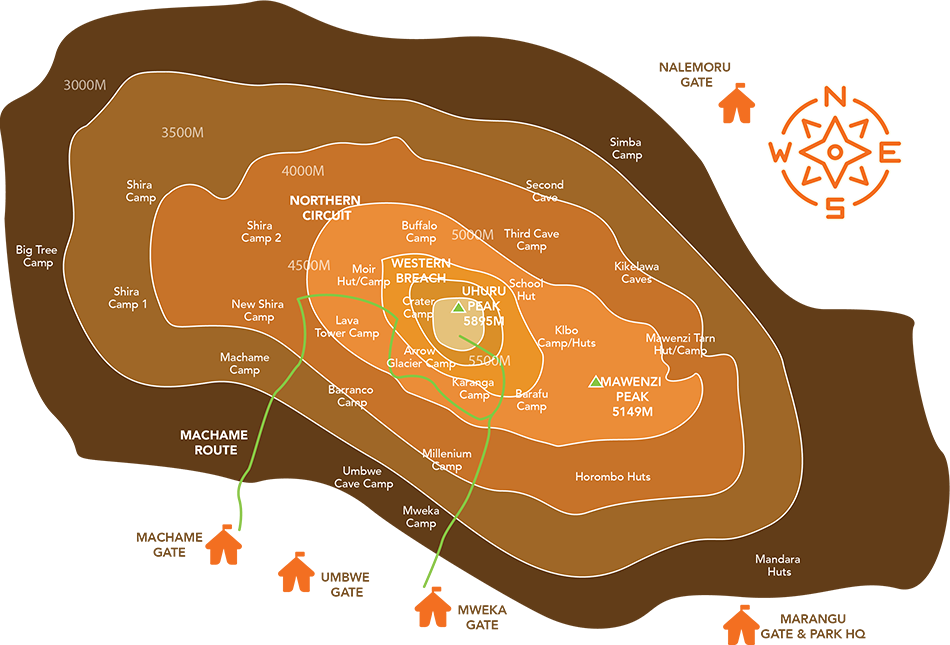
Machame Route
Distance: 62 km Days: 6-7 Difficulty Level: High
Machame route is arguably the most popular route in Mount Kilimanjaro. It offers a scenic route with steep slopes and challenging terrains. The route approaches Kilimanjaro from the south and descends via Mweka route, a route in the mountain that is used only for going down.

Marungu Route
Distance: 70 km Days: 5-6 Difficulty Level: Low
Renowned to be the least expensive route, Marangu uses the same route for ascent and descent. It is said to be the easiest route up the summit because of its gradual slopes. Hence, some climbers finish their trek in 5 days. What makes this route distinct from others is that it is the only route that offers hut accommodations. This is why travelers who wish to climb Kilimanjaro on a wet season are advised to use the Marangu route.
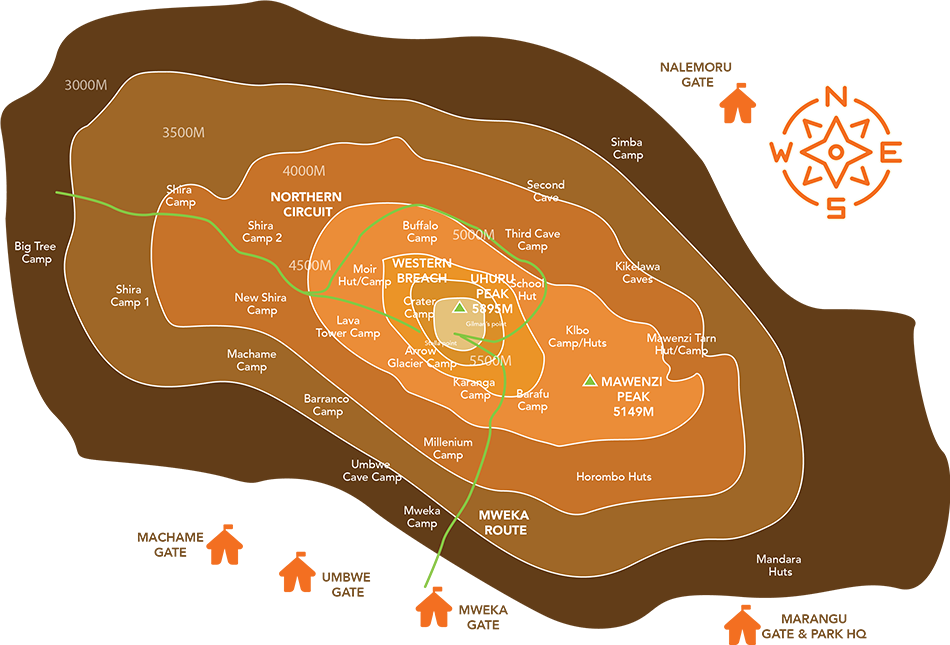
Northern Circuit
Distance: 96.5 km Days: 8-9 Difficulty Level: Low
The Northern Circuit route is the longest and newest route in Kilimanjaro. It approaches the mountain from the west and offers a breathtaking almost-360-degree view of the rarely visited northern slopes. This route promises the highest success rate and also has the most acclimatization rate.
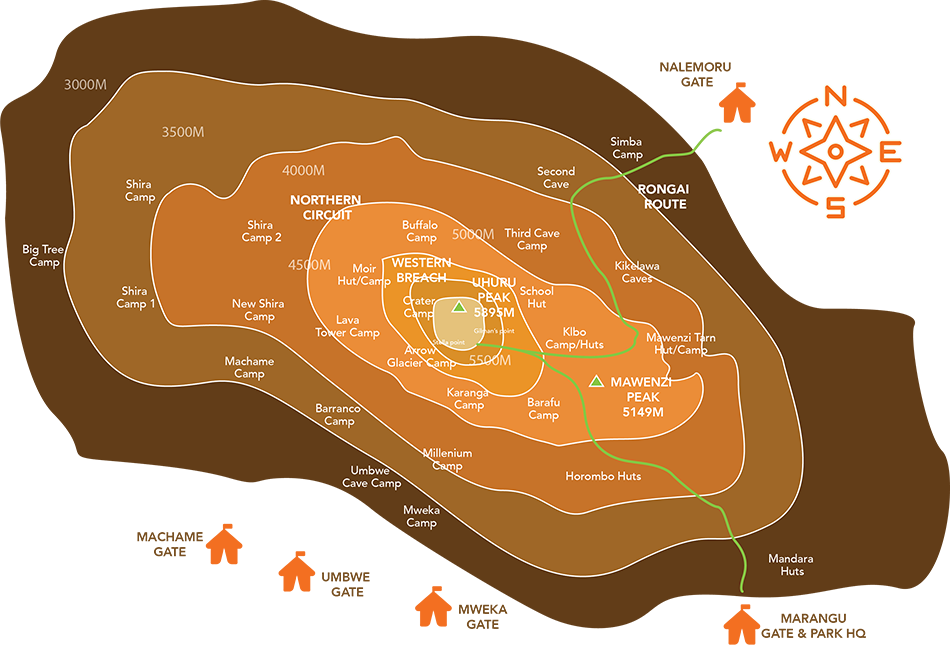
Rongai Route
Distance: 81 km Days: 5-6 Difficulty Level: Low
Approaching from the northwestern area of the mountain and descending via the Marangu route, the Rongai route is the best route to see a bunch of large wildlife like antelopes and elephants during the first days. It is the only route that starts at the northern area of the mountain. The Rongai route offers excellent success rates. The beauty of it is since it starts at the north and descends on the south, climbers get to see both sides of the mountain.
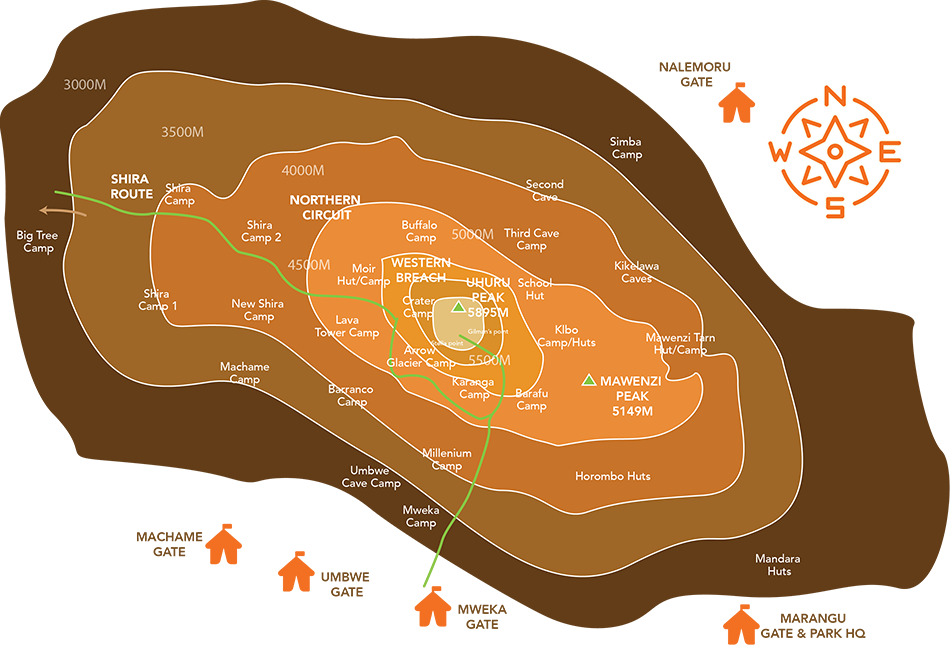
Shira Route
Distance: 56 km Days: 6-8 Difficulty Level: High
This route starts at a pretty high elevation at 11,800 feet in the west region of the mountain. For climbers who are confident in trekking difficult and high altitude terrain as well as camping out for a long period of time, this route is a good choice. Although it is nearly identical to the Lemosho route, the Shira route still has a lower success rate because of its poor acclimatization.
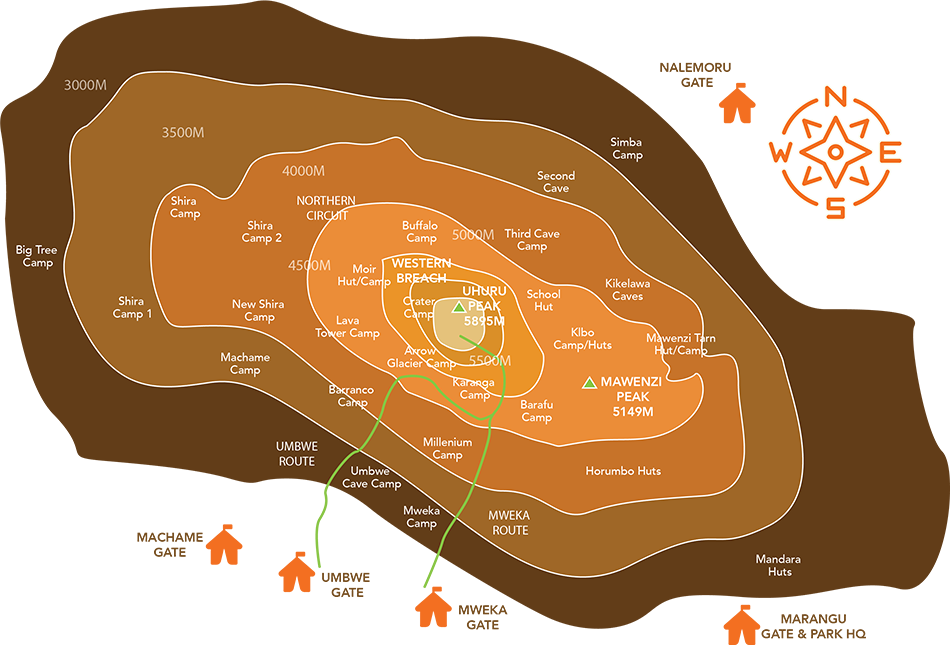
Umbwe Route
Distance: 53 km Days: 5-6 Difficulty Level: Very High
Umbwe is a short, steep and direct route that starts from the southern region of the mountain. It is considered the most challenging route due to its fast ascent to high altitude without ample time for acclimatization. It has very low success rates and is only recommended for very experienced climbers.
